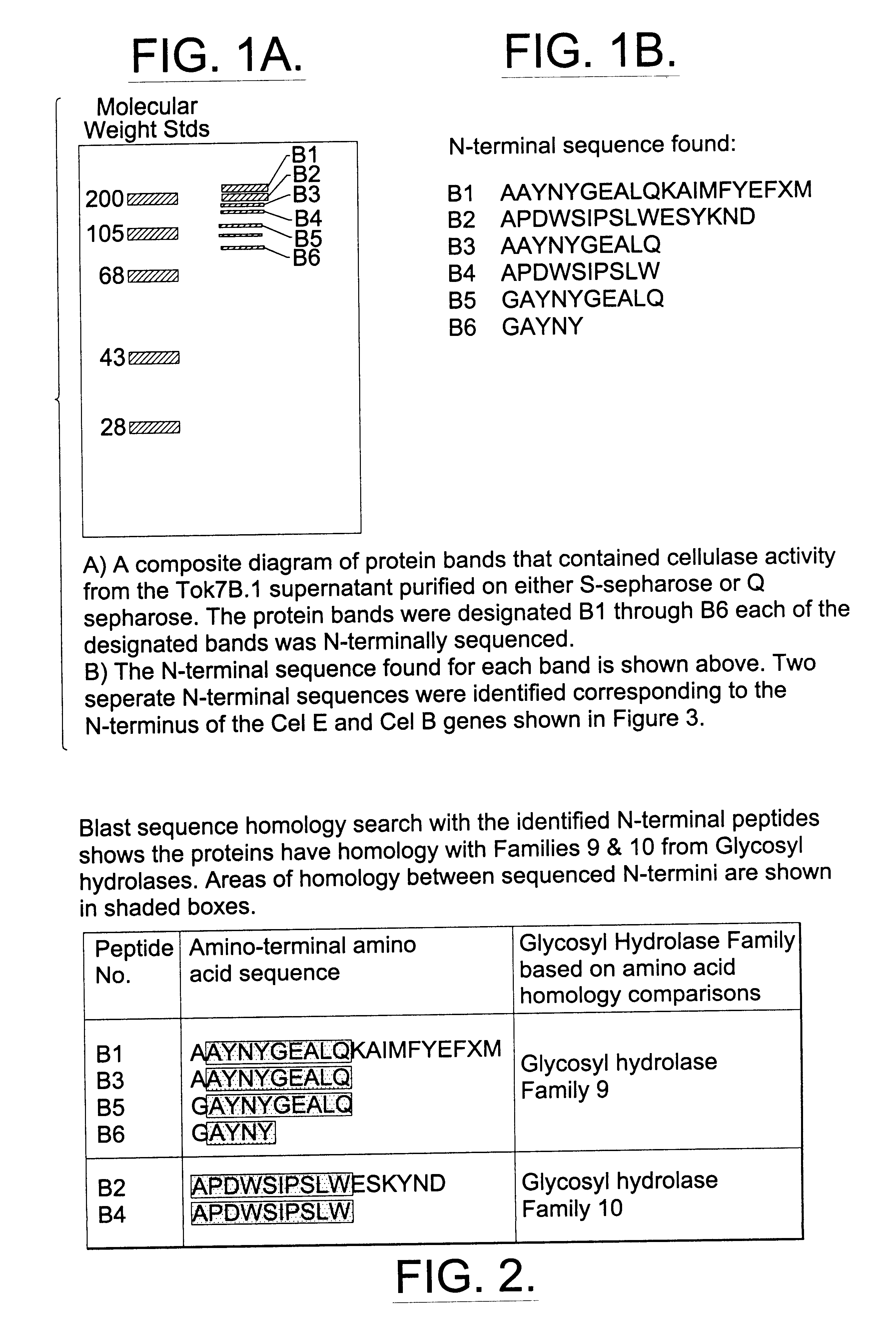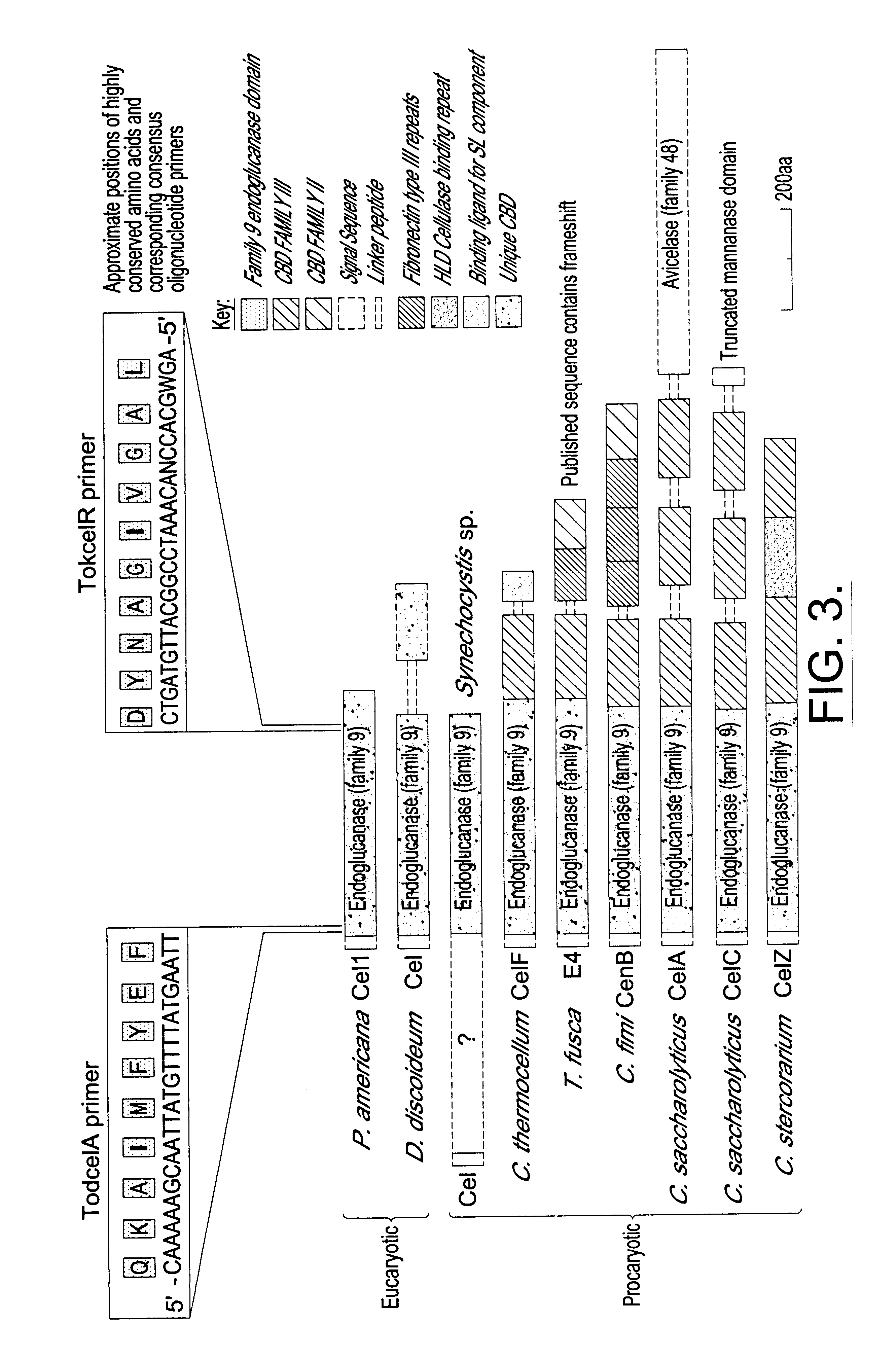Compositions and methods for treating cellulose containing fabrics using truncated cellulase enzyme compositions
- Summary
- Abstract
- Description
- Claims
- Application Information
AI Technical Summary
Benefits of technology
Problems solved by technology
Method used
Image
Examples
Embodiment Construction
I. Definitions
"Cotton-containing fabric" means sewn or unsewn fabrics made of pure cotton or cotton blends including cotton woven fabrics, cotton knits, cotton denims, cotton yarns and the like. When cotton blends are employed, the amount of cotton in the fabric should be at least about 40 percent by weight cotton; preferably, more than about 60 percent by weight cotton; and most preferably, more than about 75 percent by weight cotton. When employed as blends, the companion material employed in the fabric can include one or more non-cotton fibers including synthetic fibers such as polyamide fibers (for example, nylon 6 and nylon 66), acrylic fibers (for example, polyacrylonitrile fibers), and polyester fibers (for example, polyethylene terephthalate), polyvinyl alcohol fibers (for example, Vinylon), polyvinyl chloride fibers, polyvinylidene chloride fibers, polyurethane fibers, polyurea fibers and aramide fibers. "Cellulose containing fabric" means any cotton or noncotton containing...
PUM
| Property | Measurement | Unit |
|---|---|---|
| Temperature | aaaaa | aaaaa |
| Temperature | aaaaa | aaaaa |
| Temperature | aaaaa | aaaaa |
Abstract
Description
Claims
Application Information
 Login to View More
Login to View More - R&D
- Intellectual Property
- Life Sciences
- Materials
- Tech Scout
- Unparalleled Data Quality
- Higher Quality Content
- 60% Fewer Hallucinations
Browse by: Latest US Patents, China's latest patents, Technical Efficacy Thesaurus, Application Domain, Technology Topic, Popular Technical Reports.
© 2025 PatSnap. All rights reserved.Legal|Privacy policy|Modern Slavery Act Transparency Statement|Sitemap|About US| Contact US: help@patsnap.com



